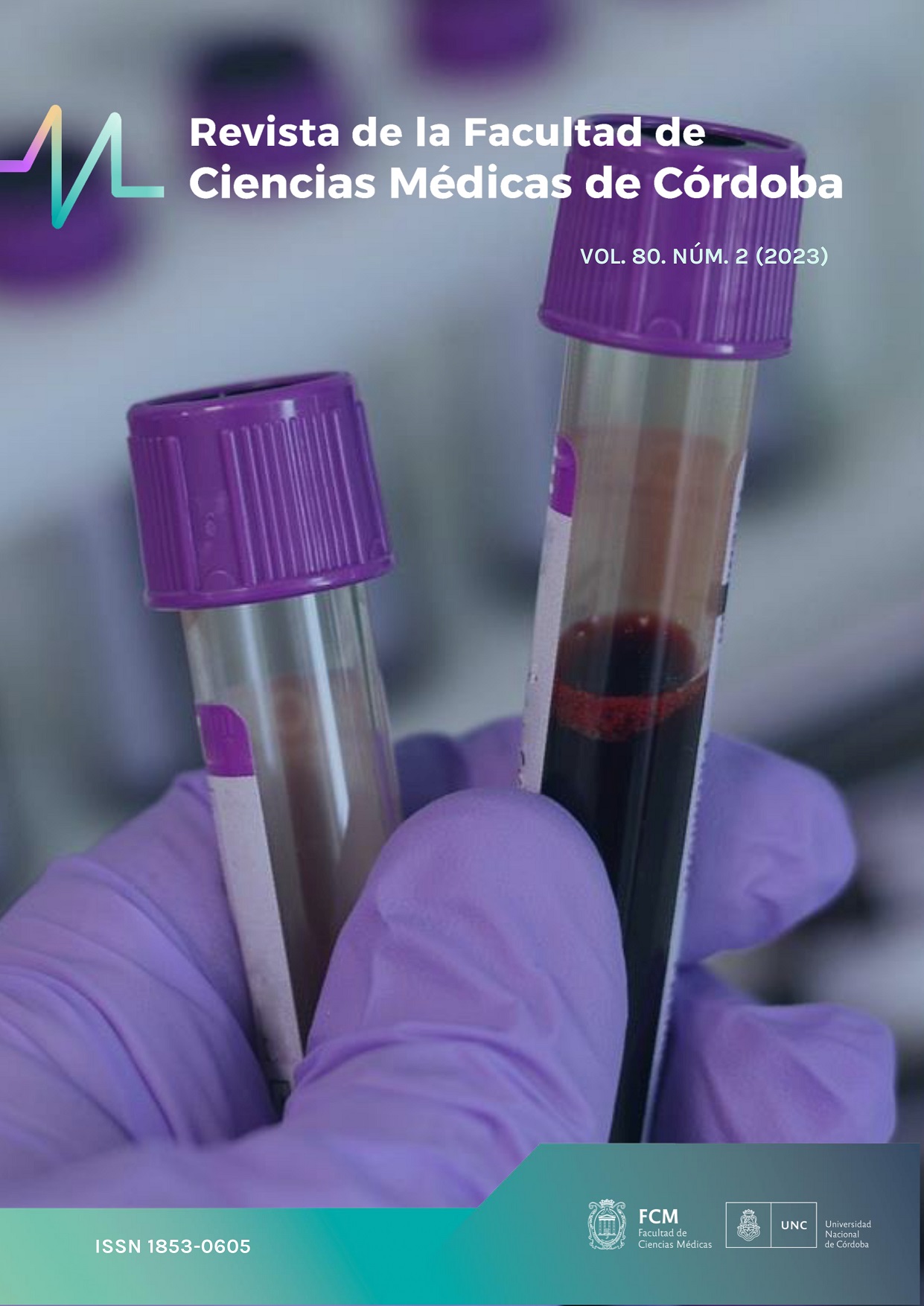Regional oxidative stress in encephalon of female mice with polyphenolic exposure from tea extracts in oral overweight plant-based treatment
DOI:
https://doi.org/10.31053/1853.0605.v74.n3.14815Palabras clave:
Central nervous system, Aspidosperma quebracho-blanco, Ilex paraguariensis, Lantana grisebachii, Obesity, InfusionResumen
Polyphenols provide by diet may act as antioxidant in the Central Nervous System and exert a protective effect on metabolic diseases. The aim of this study was to establish tea extract effects on oxidative status and murine overweight in accordance with polyphenolic availability in different encephalic regions. Methods: Balb/c mice (female, n>3) with overweight received for 15 days 100 mg/Kg/d of extract from Lantana grisebachii, Aspidosperma quebracho-blanco, or Ilex paraguariensis extracts and control group (received water without extract). Body weight gain was recorded regularly. Polyphenols, hydroperoxides (HP), lipid peroxides (LP), and superoxide anion (SO) were measured in brain (telencephalon and diencephalon), midbrain, brainstem and cerebellum. Results were compared by ANOVA followed by the Tukey test (P<0.05). Results: A. quebracho-blanco-based treatment decreased weight gain and increased polyphenols in brainstem (p<0.02), although it concomitantly increased SO and LP in this region (p=0.0029 and p=0.0280, respectively). L. grisebachii-based treatment reduced oxidative markers differentially in each region (p<0.05). I. paraguariensis-based treatment oxidized midbrain and cerebellum, although it was antioxidant in the brainstem (p<0.05). All treatments were antioxidant in telencephalon (p=0.0029). Conclusions: The A. quebracho-blanco extract was active on overweight and increased polyphenols in brainstem, with safe functional derivatives being required to avoid oxidative stress. Other extracts affected oxidative status in a region-dependent manner.Descargas
Referencias
1. Surh YJ. Xenohormesis mechanisms underlying chemopreventive effects of some dietary phytochemicals. Ann. N. Y. Acad. Sci. 2011;1229:1-6. DOI: 10.1111/j.1749-6632.2011.06097.x
2. Tangney C, Rasmussen HE. Polyphenols, Inflammation, and Cardiovascular Disease. Curr. Atheroscler. Rep. 2013;15:324. DOI: 10.1007/s11883-013-0324-x
3. Kumar GP, Khanum F. Neuroprotective potential of phytochemicals. Pharmacogn. Rev. 2012;6(12):81-90. DOI: 10.4103/0973-7847.99898
4. Chiva-Blanch G, Urpi-Sarda M, Llorach R et al. Differential effects of polyphenols and alcohol of red wine on the expression of adhesion molecules and inflammatory cytokines related to atherosclerosis: a randomized clinical trial. Am. J. Clin. Nutr. 2012;95:326-34. DOI: 10.3945/ajcn.111.022889
5. Vara Messler M, Cremonezzi DC, Soria EA, Eynard AR. Nutritional chemoprevention of urinary tract tumors (UTT) induced by lithogenic agents: Risk for UTT in children exposed to melamine-contaminated milk formulas. J. Environ. Sci. Health. C. Environ. Carcinog. Ecotoxicol. Rev. 2012; 30:174-87. DOI: 10.1080/10590501.2012.684302
6. Cave MC, Hurt RT, Frazier TH et al. Obesity, inflammation and the potential application of pharmaconutrition. Nutr. Clin. Pract. 2008;23:16-34.
7. Schwartz MV, Woods SC, Porte D, Seeley RJ, Baskin DG. Central nervous system control of food intake and body weight. Nature. 2006;443(7109):289-95 DOI: 10.1038/nature05026
8. Most J, Goossens GH, Jocken JW, Blaak EE. Short-term supplementation with a specific combination of dietary polyphenols increases energy expenditure and alters substrate metabolism in overweight subjects. Int. J. Obes. 2014;38:698-706. DOI: 10.1038/ijo.2013.231
9. Manach C, Williamson G, Morand C, Scalbert A, Rémésy C. Bioavailability and bioefficacy of polyphenols in humans. I. Review of 97 bioavailability studies. Am. J. Clin. Nutr. 2005;81:230-42.
10. Lambert JD, Sang S, Yang CS. Possible controversy over dietary polyphenols: benefits vs risks. Chem. Res. Toxicol. 2007;20(4):583-5. DOI: 10.1021/tx7000515
11. Canalis AM, Cittadini MC, Albrecht C, Soria EA. Sex-related redox effects of Aspidosperma quebracho-blanco, Lantana grisebachii and Ilex paraguariensis on blood, thymus and spleen. Indian. J. Exp. Biol. 2014;52(9):882-9.
12. Cittadini MC, Canalis AM, Albrecht C, Soria EA. Effects of oral phytoextract intake on phenolic concentration and redox homeostasis in murine encephalic regions. Nutr. Neurosci. 2015;18(7):316-22. DOI: 10.1179/1476830514Y.0000000130
13. Eisen JE. Results of growth curve analyses in mice and rats. J. Anim. Sci. 1976;42:1008-23.
14. Panickar KS. Effects of dietary polyphenols on neuroregulatory factors and pathways that mediate food intake and energy regulation in obesity. Mol. Nutr. Food Res. 2013;57(1):34-47. DOI: 10.1002/mnfr.201200431
15. Lenard NR, Berthoud HR. Central and Peripheral Regulation of Food Intake and Physical Activity: Pathways and Genes. Obesity. 2008;16(3):11-22. DOI: 10.1038/oby.2008.511
16. Sainsbury A, Zhang L. Role of the hypothalamus in the neuroendocrine regulation of body weight and composition during energy deficit. Obes. Rev. 2012;13:234–57. DOI: 10.1111/j.1467-789X.2011.00948.x
17. Wiczkowski W, Skipor J, Misztal T, Szawara Nowak D, Topolska J, Piskula MK. Quercetin and isorhamnetin aglycones are the main metabolites of dietary quercetin in cerebrospinal fluid. Mol. Nutr. Food Res. 2015;59(6):1088-94. DOI: 10.1002/mnfr.201400567
18. Bahramsoltani R, Farzaei MH, Farahani MS, Rahimi R. Phytochemical constituents as future antidepressants: a comprehensive review. Rev. Neurosci. 2015;26(6):699-719. DOI: 10.1515/revneuro-2015-0009
19. Nabavi SF, GL Russo, Daglia M, Nabavi SM. Role of quercetin as an alternative for obesity treatment: You are what you eat!. Food Chem. 2015;179:305-10. DOI: 10.1016/j.foodchem.2015.02.006
20. Moyse E, Arseneault M, Gaudreau P, Ferland G, Ramassamy C. Gender-and region-dependent changes of redox biomarkers in the brain of successfully aging LOU/C rat. Mech. Ageing. Dev. 2015;149:19-30. DOI: 10.1016/j.mad.2015.04.002
21. Freeman LC, Ting JPY. The pathogenic role of the inflammasome in neurodegenerative diseases. J. Neurochem. 2016;136(1):29-38. DOI: 10.1111/jnc.13217
22. Hsieh YS, Kuo MH, Chen PN, Kuo DY. The Identification of Neuropeptide Y Receptor Subtype Involved in Phenylpropanolamine-induced Increase in Oxidative Stress and Appetite Suppression. Neuromolecular Med. 2013;15(1):159-68. DOI: 10.1007/s12017-012-8206-x
23. Juurlink BH, Azouz HJ, Aldalati AM, Altinawi BM, Ganguly P. Hydroxybenzoic acid isomers and the cardiovascular system. Nutr. J. 2014;13:63. DOI: 10.1186/1475-2891-13-63
24. Chalansonnet M, Carabin N, Boucard S, Cosnier F, Nunge H, Gagnaire F. Study of the potential oxidative stress induced by six solvents in the rat brain. Neurotoxicology. 2013;35:71-83. DOI: 10.1016/j.neuro.2012.12.002
25. Zamora-Ros R, Rothwell JA, Scalbert A et al. Dietary intakes and food sources of phenolic acids in the European Prospective Investigation into Cancer and Nutrition (EPIC) study. Br. J. Nutr. 2013;110(8):1500-11. DOI: 10.1007/s00394-015-0950-x
Descargas
Publicado
Número
Sección
Licencia
Derechos de autor 2017 Universidad Nacional de Córdoba

Esta obra está bajo una licencia internacional Creative Commons Atribución-NoComercial 4.0.
Se permite la generación de obras derivadas siempre que no se haga con fines comerciales. Tampoco se puede utilizar la obra original con fines comerciales.
















